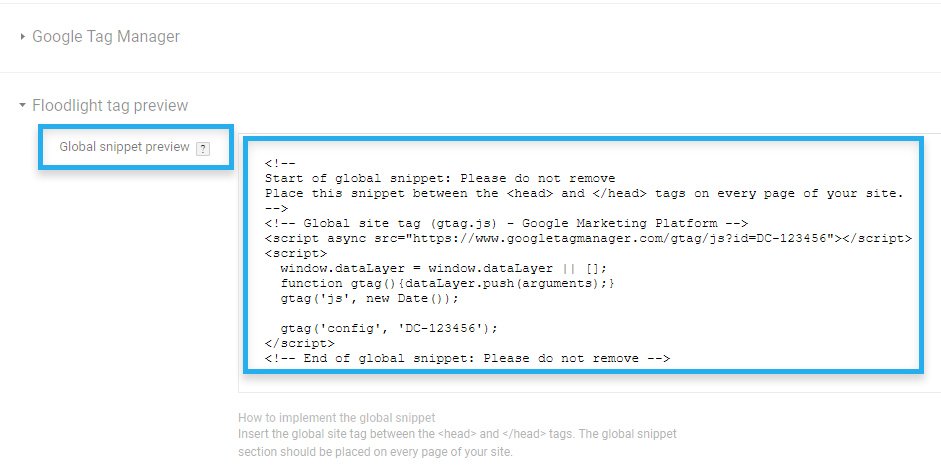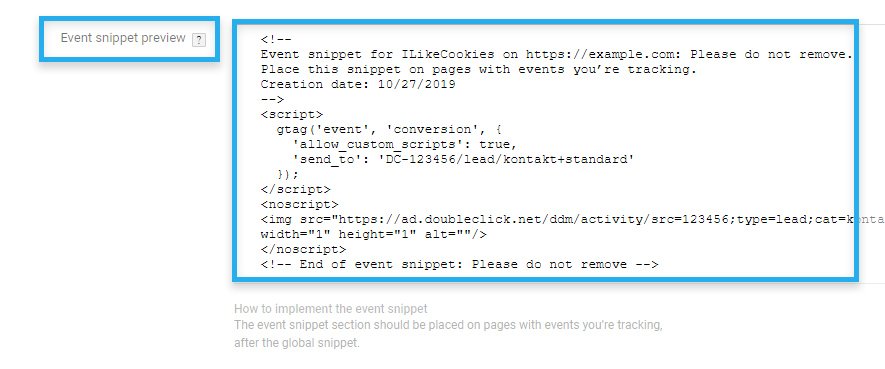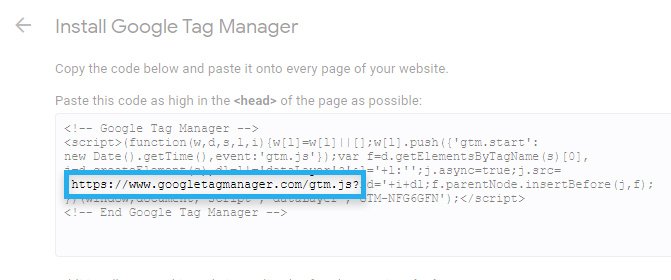8 Implementation Facts • Global Site Tag
8 implementation facts you should know while implementing Google Floodlight conversions with Global Site Tag.
Filter by Category
Filter by Author

8 implementation facts you should know while implementing Google Floodlight conversions with Global Site Tag.
Posted by Wojtek Andrzejczak

Google Web Designer and Adobe Animate CC – Learn how you can prepare HTML5 creatives compatible with Google Studio for Google Marketing Platform campaigns.
Posted by Wojtek Andrzejczak

6 steps to activate Floodlight in DV360 for TrueView for Action campaign.
Posted by Wojtek Andrzejczak

While preparing HTML5 creatives that contain an embedded video file, we face a few common problems, mostly on mobile devices.
Posted by Wojtek Andrzejczak

The discrepancy between delivered impressions is the most common any annoying campaign reporting problem. Let's discuss this problem from the agency and publisher's point of view.
Posted by Wojtek Andrzejczak

Google Analytics doesn’t track your Google Marketing Platform campaign traffic correctly if your traffic is identified as DFA/CPM.
Posted by Wojtek Andrzejczak

Google Campaign Manager for all new accounts sets the default time zone as New Your -5/-4h. If affects all start and end dates in all our campaigns.
Posted by Wojtek Andrzejczak

Update your server configuration with Certbot / Letscrypt snippets for your Nginx server. Automate SSL certificate challenges by including simple snippets.
Posted by Wojtek Andrzejczak

If your website is slow, and it takes a few seconds to load a single page event. It could indicate MySQL or Mongo DB database problem with your configuration.
Posted by Wojtek Andrzejczak

When you use Firebase Project you also create Google Cloud Console Project for all platforms. Generated API keys require a security audit to avoid problems.
Posted by Wojtek Andrzejczak

8 implementation facts you should know while implementing Google Floodlight conversions with Global Site Tag.
Contents
Global Site Tag is a JavaScript SDK introduced to unify all Google products to have the same API for conversion and measurements.
It is an elementary JavaScript library that has to be loaded only once on the page, and when it is loaded, we send information that page view, conversion, or the purchase has happened.
In the Google Campaign Manager under Advertiser Floodlight Activities, select your Floodlight and under Tag Format switch to “Global site tag” option and save changes.

When the Global Site Tag option is selected under Tag format, under the Floodlight tag preview section, you find there two main elements. The first of them is Global Snippet. You should implement it on each page in the HEAD section. It will always be the same for all Floodlights under the same advertiser.

If you use Google Tag Manager, it does not apply to you. Otherwise, you need to be now very careful.
If you have Google Analytics, Google Ads account, Google Campaign Manager advertiser, and you would like to track conversion across all of those accounts correctly without missing conversions in the reports. You need to do something fundamental, which is to extend your Global Snippet by adding additional configurations like in the example below.
// our default config
gtag('config', 'UA-123456');
// additional GST configs for Google Ads and Google Analytics
gtag('config', 'AW-987654');
gtag('config', 'DC-098123');Extending GST will allow Google to model Multi-Channel conversion reports correctly and will avoid situations where you don’t report all or even any conversions for your campaigns.
Note
It does not matter meter from which Google platform the Global Snippet comes from. It is crucial to extend config with other Google platforms, which you use to advertise/analyze within the conversion funnel.
Below you can find the actual event when fires. It counts impression/conversion for our Floodlight. So we should not implement it on every page, instead, specify place and time when it should fire 🙂

Global Site Tag and Google Tag Manager use the same domain. The fact that GTM is using the GoogleTagManager.com domain is self-evident. But the fact that that GST also uses the same domain is very confusing and strange.
In the GDPR times, trying to explain to the client and his lawyers that GST is necessary to use and the fact it uses the same domain as GTM does not make things easy. Many companies use Tealium IQ or Adobe DTM, and they don’t want/can’t use other tag manager applications. And when they see the domain name, they reply that they don’t want to use GTM, so they don’t agree to use GST.
I can not remind myself self a more complicated thing I had to explain to anyone in my entire life.
GST JavaScript library is loaded under the path /gtag/js?id=*. It does not load any tag container, just a JavaScript API to communicate with Google platforms that some impressions/conversions were triggered on the website.
You can not call or connect GST with any GTM container. It is not possible.

GTM tag container is loaded under the path /gtm.js?id=*. In the GTM you can implement Google Floodlights, Google Analytics, Google Ads conversions (and many more), and by default, they will be using Global Site Tag implementation for Google tags.

Yes, it does.
3rd party cookies are dead. Old Google conversion tags use 3rd party cookies only. So no cookies, no conversions.
Whatever Google will change within Global Site Tag to improve our campaign conversions, it will happen without our interaction, and need to re-implement everything again.
Subscribe to receive updates about new articles.

Google Analytics doesn’t track your Google Marketing Platform campaign traffic correctly if your traffic is identified as DFA/CPM.

The discrepancy between delivered impressions is the most common any annoying campaign reporting problem. Let's discuss this problem from the agency and publisher's point of view.